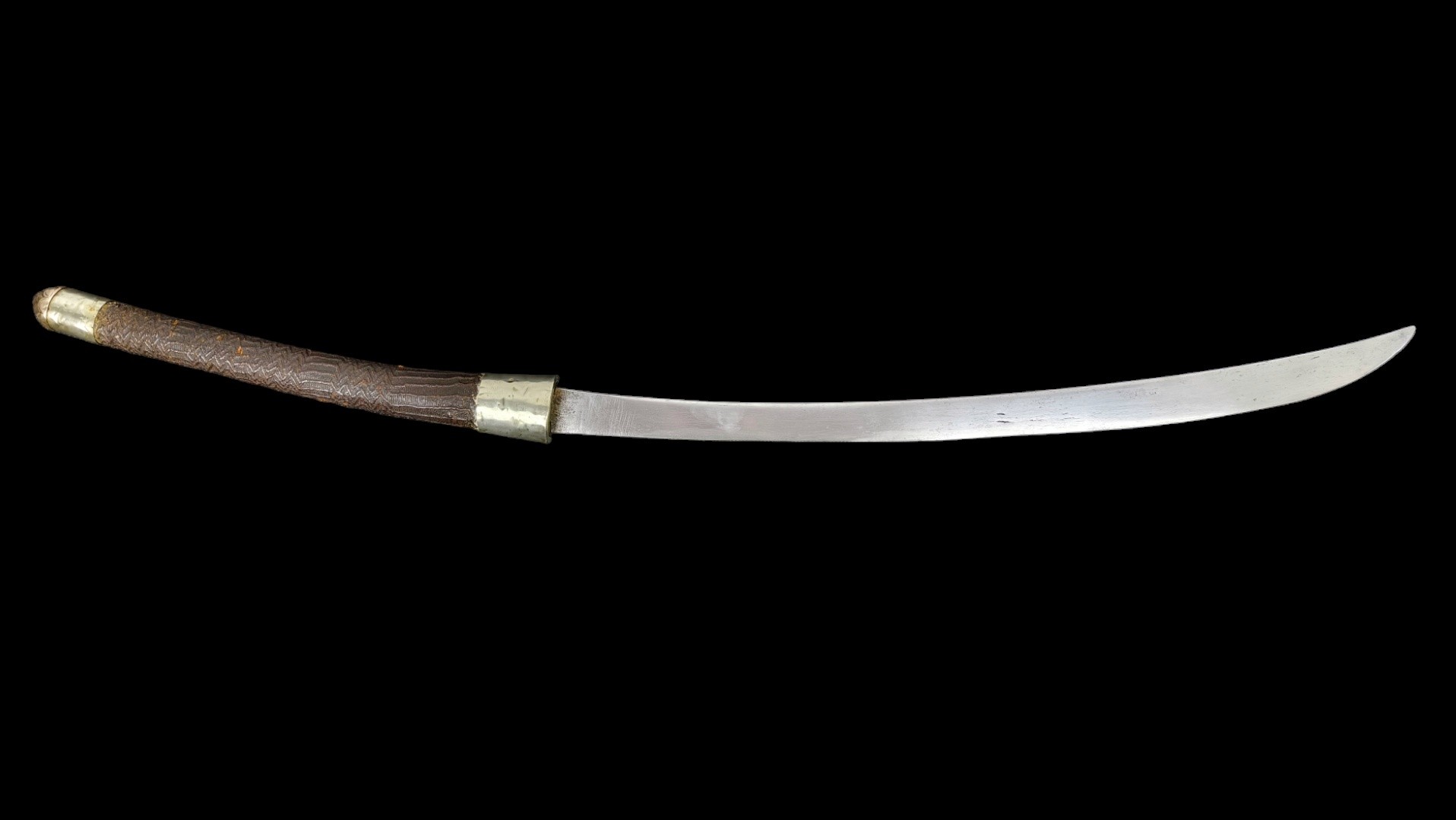
A Northern Thai Mystery
December 29, 2024
Readers of this website will know that I have an affinity or at least a tendency to collect swords from the historic area of Lanna, or Northern Thailand. I am not sure if this is because the aesthetics of the region, including its unique blend of Tai and Burmese influences, appeal to me or because it is simply a chance occurrence that this is what has appeared on the market at the time I was looking for pieces. However, pieces from the north of Thailand, the border areas with Burma and Laos are at the core of my collection and my own personal travels within the region have also gravitated towards the same area.
I have always found it a fascinating place because of its history, at times a major kingdom in its own right, at others a vassal of the vast Burmese empire, at others subject to Ayutthaya and Bangkok. Now, it is of course part of modern day Thailand and an important cultural cornerstone of the Thai nation, but in the past and present it was very much its own entity and culture. This sword is an interesting expression of that fact, both sharing characteristics with its southern neighbours, but also showing cross border influences with it's modern day Lao and Burmese cousins. The culmination of these parts being one of the more unique swords I have handled in sometime.
This sword features some elements which are entirely familiar to those who collect dha/daab. The blade features a v-spine, the pommel is a lotus bud, it is a simple, curved sabre in form. However, each of those elements feature significant variances to most of the commonly encountered examples.
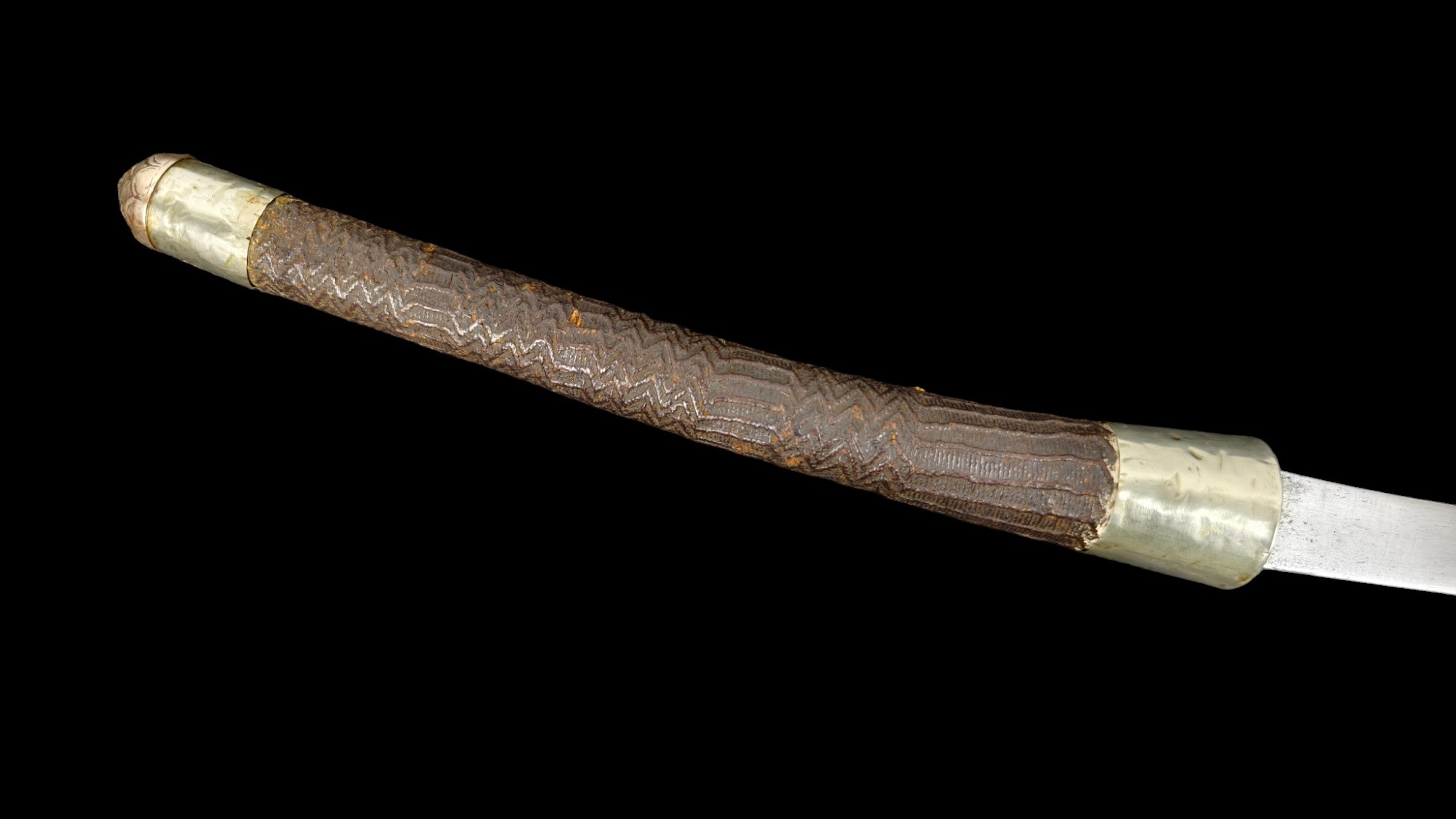

The hilt is quite simple in some ways, the mounts are sheets of silver wrapped around a wood core, the grip is lacquered cord and the pommel is a slightly different alloy with likely more copper and shaped as a lotus flower. The detail however is intriguing, unlike most dha the grip swells at the guard significantly, the grip is an incredibly intricate weave which is typically associated with Buddhist monks and the pattern often includes attributes for success and protection in battle. Known as 'tak rut' or more phonetically correct as 'ta krud', amulets and these woven patterns have existed for centuries.
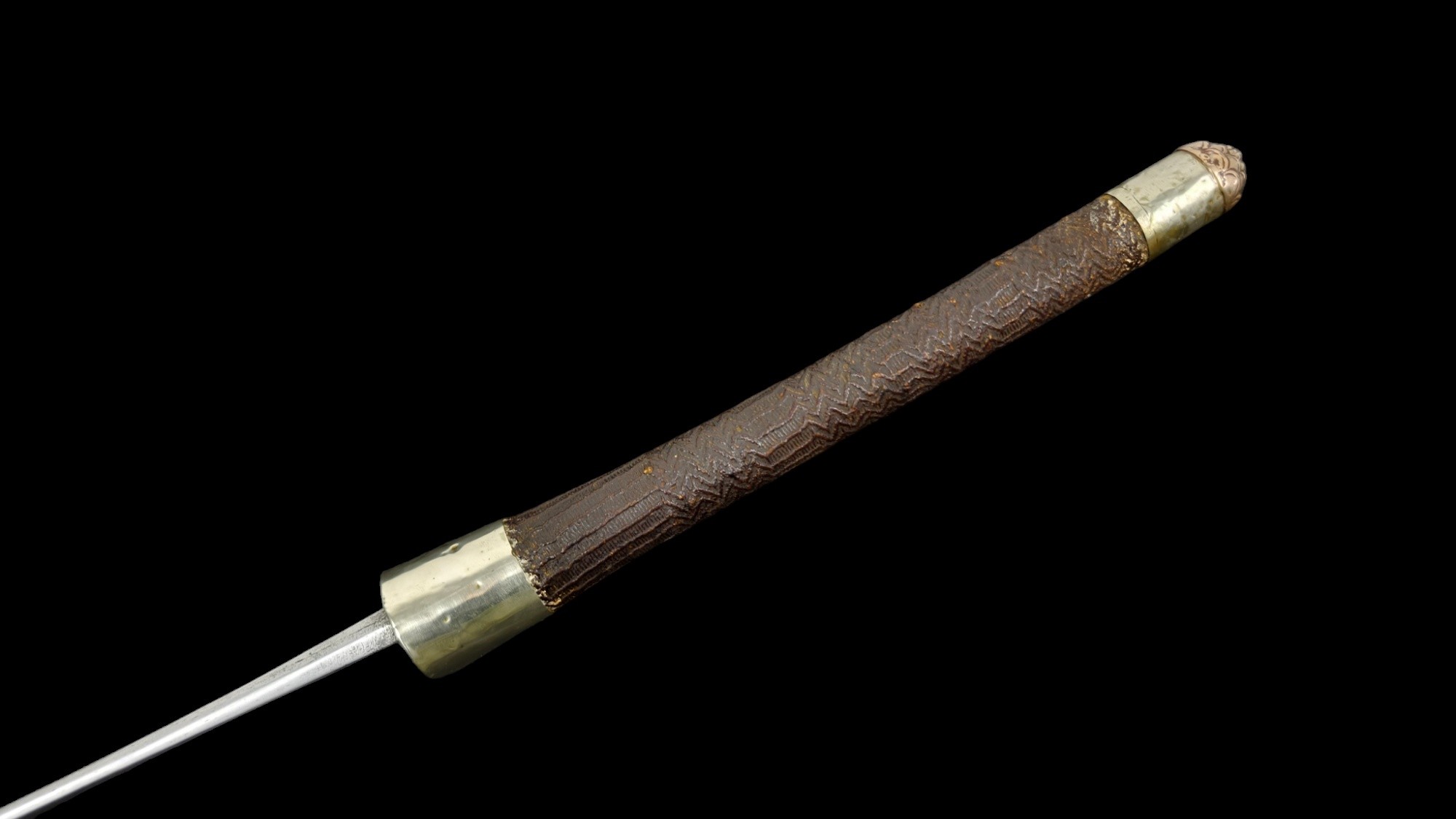

Original grips of this style are rare and can be found on pieces from the Ayutthaya period and also Thai katana. This shows a clear shared heritage with this sword and its southern cousins.

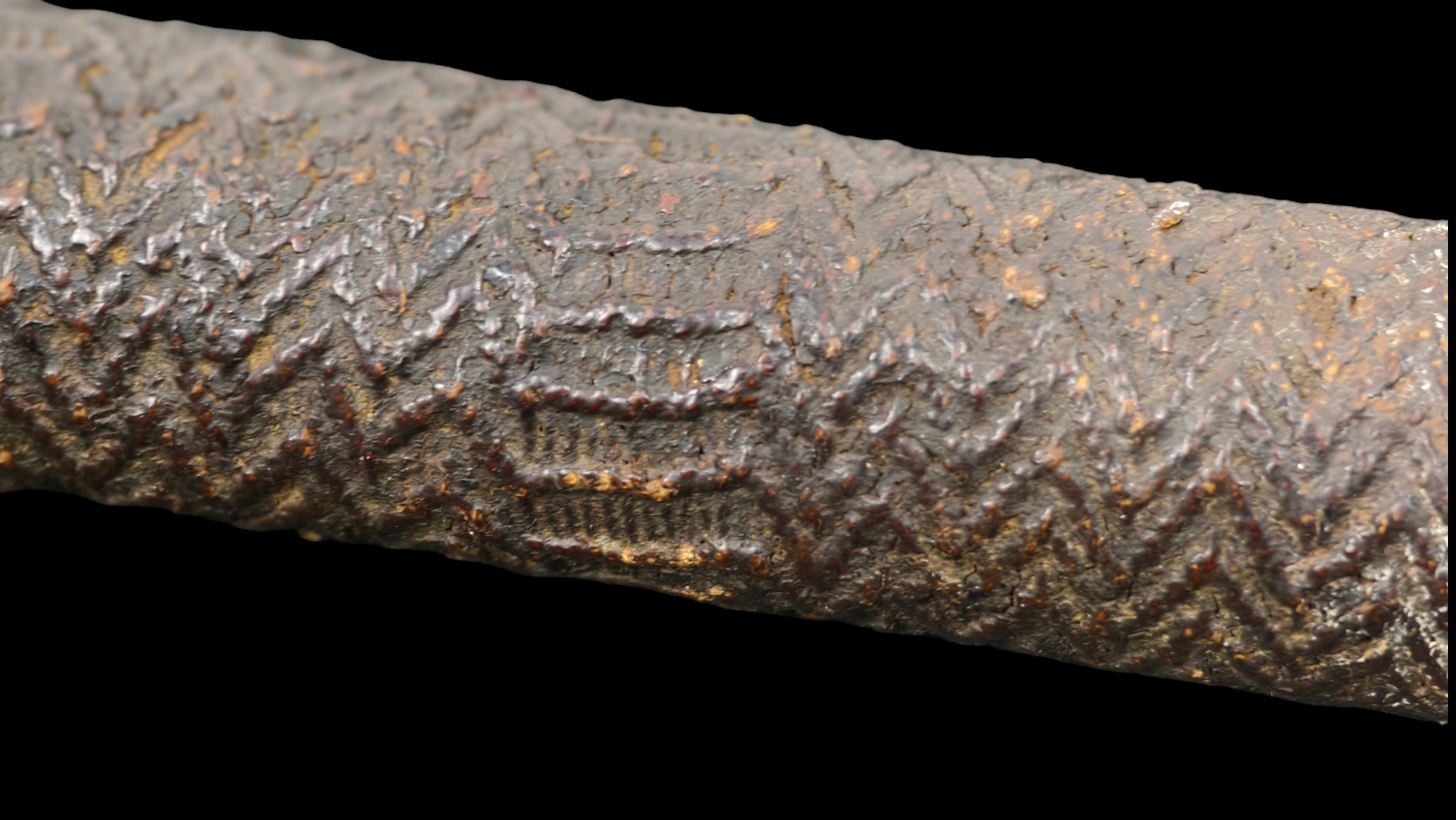
The pommel form is equally intriguing, while it is a lotus, the repousse work is more in keeping with a Burmese tradition than silver/samrit work from Siam or Lao. The different alloy used perhaps points to a different workshop producing the pommel which was then incorporated into the final sword.

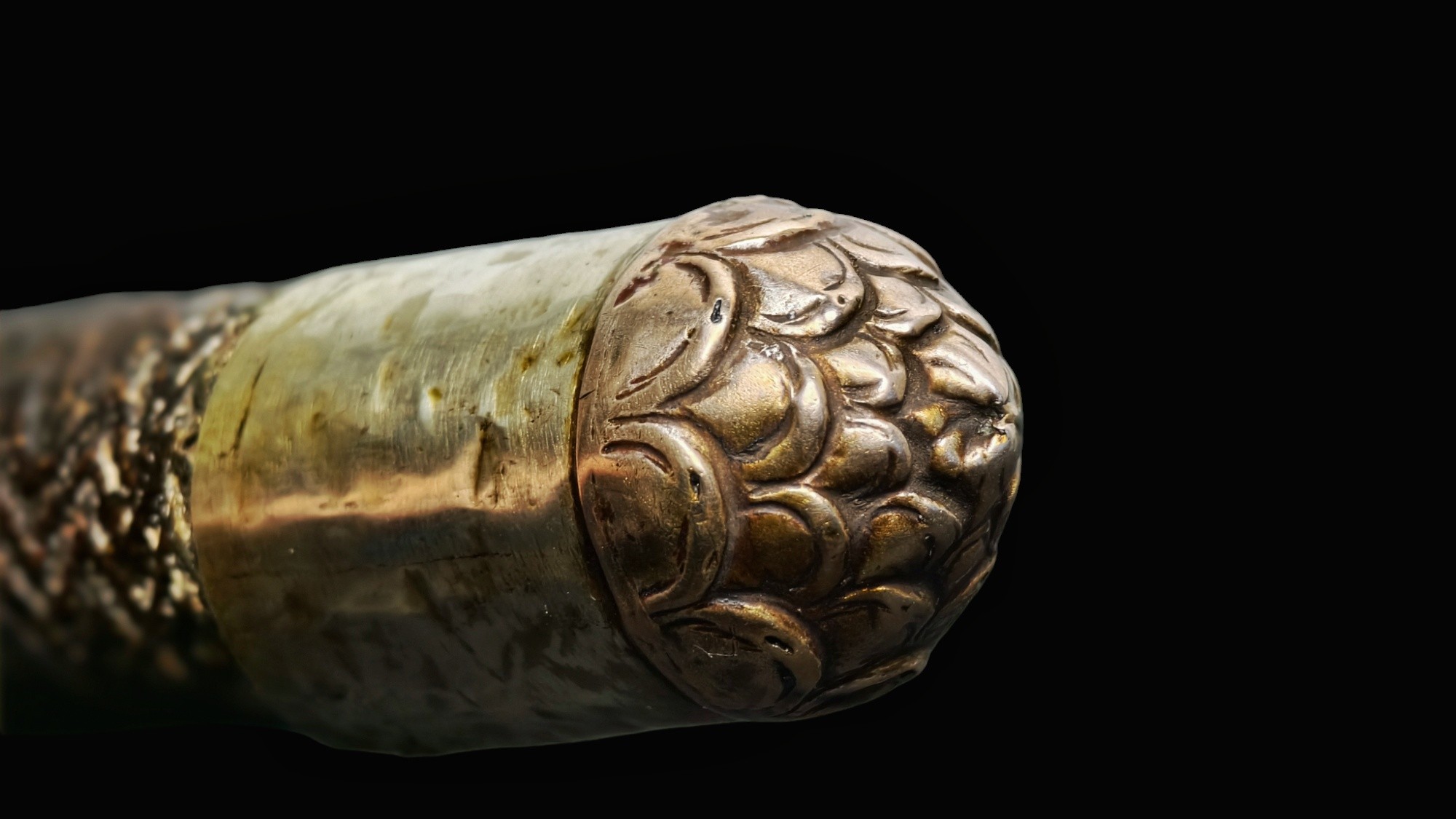
The fitment of a brass plate on the collar to protect the wood core of the handle is also a feature often seen on Burmese swords.

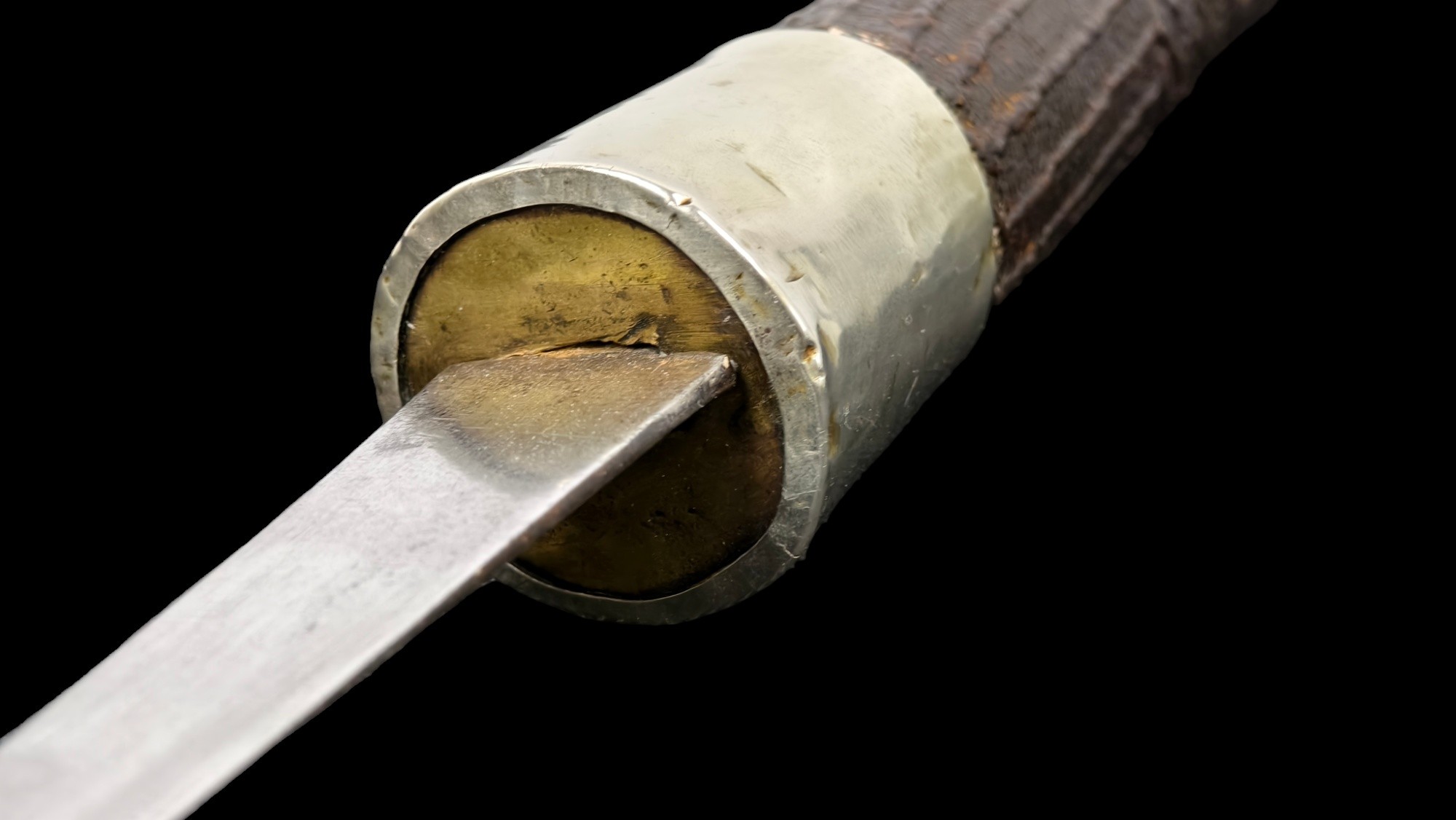
The v-spine is not uncommon of swords from this region but this particular example features extreme distal taper and an unusually thick blade. This example measures nearly 13mm at the base, meaning it is as thick as two handed swords I own from the same region. The sword itself weighs 590 grams, somewhat lighter than heavy war swords from Lanna and Laos, but due to the lighter handle construction, this sword "floats" when wielded rather than feeling tip heavy.
Part of this characteristic is due to the curvature of the blade, most dha, while curved, are not as extreme as say, a tulwar or shamshir in geometry. This example while not reaching that level of curvature has a greater degree of blade curve than any other dha I have curated.

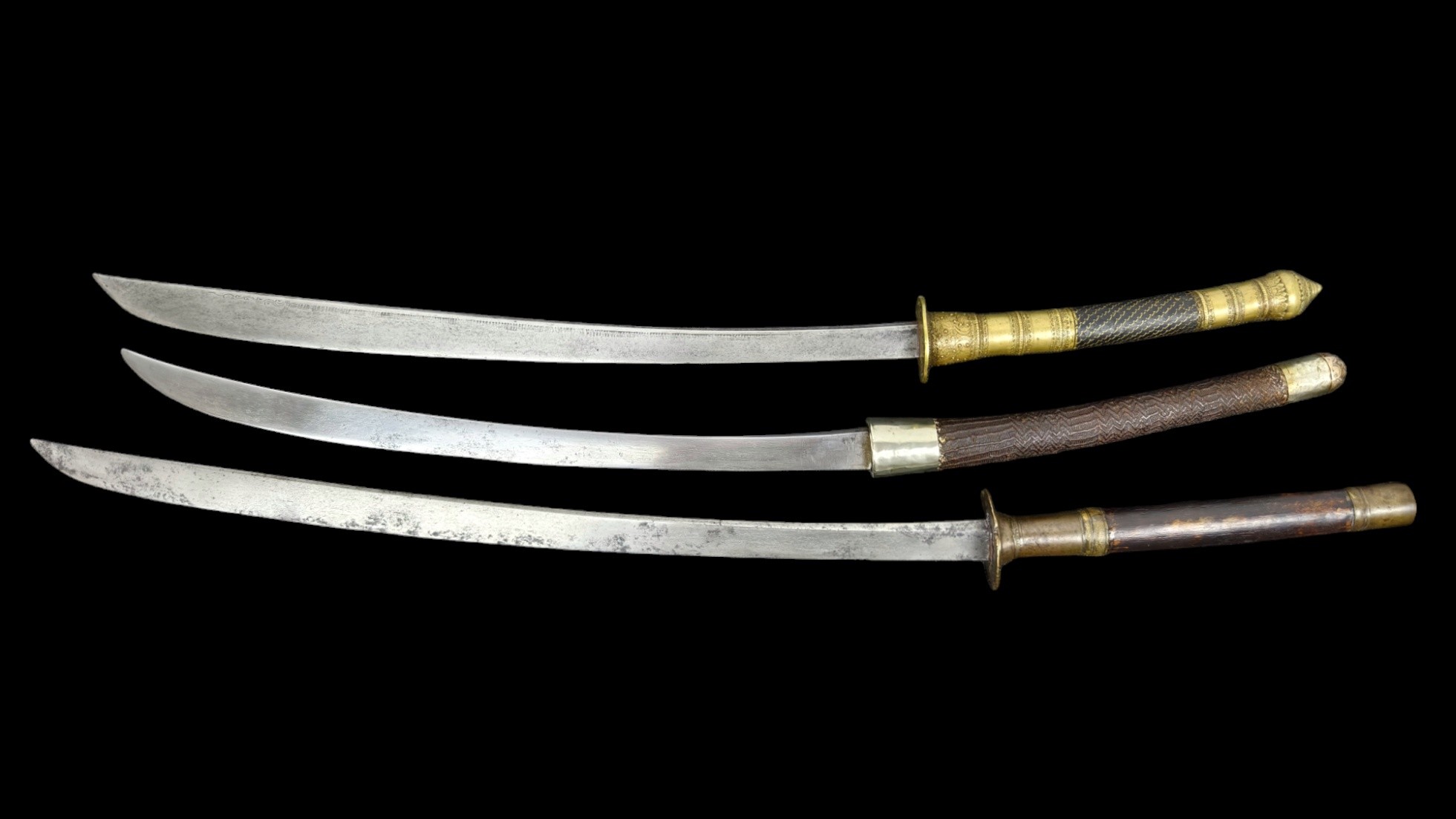
This blade geometry fundamentally changes the point of balance and handling characteristics of the sword, all three pieces pictured in the image above are similar in length but all are obviously designed with different principles in mind. As a collector and enthusiast these are the details that lead to a fascination with this region and its sword styles. While all of these swords are fundamentally dha/daab, this is an excellent reminder that our western collecting labels are often gross over simplifications for real weapons of war made for brutal, reality driven considerations.
This is a prime example of a sword that looks simple on images, but handles and impresses in an entirely different way in person. While we will likely never be able to pinpoint its origins precisely it is an intriguing piece that is likely at least from the 18th century if not older.